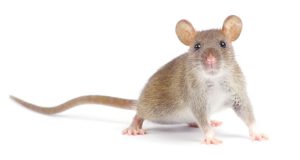ETHICAL AND ENVIRONMENTAL CONSIDERATIONS
When thinking of pest control, animal welfare can easily be overlooked but chemicals and poisons are now considered a last resort when other options are available with an increasing use of non-toxic monitoring methods, baits and traps to help protect non-target species and reduce the overall use of harmful chemicals. Pest specialists are using highly adopted hierarchies of control such as the Campaign for Responsible Rodenticide Use (CRRU) to help make decisions and control outbreaks. The key elements of this type of framework includes the elimination of pests by removing habitats or sealing entry points; using physical barriers to prevent pests entering buildings; modifying habitats to make them less attractive; using natural predators (e.g. birds of prey) to control pest population; and monitoring and detection methods to identify infestations early.
In the past, it was normal to have poisons in place in certain areas all the time, but those days are long gone. If there have been no sightings of rodents, non-toxic methods will be used to ensure no harm is caused to other animals who are interested in taking food from a trap such as hedgehogs. There are also more laws protecting certain species of animals, such as dormice, bats and breeding and wintering birds. Therefore, it’s imperative that environmental risk assessments are carried out to ensure the most appropriate course of action is taken. Pest specialists can put other measures in place to uphold environmental responsibilities. For example, moving to LED technology from shorter lived fluorescent lighting, becoming conscious around waste disposal, minimising the use of pesticides and using new technology to help reduce the number of technician site visits meaning less fuel consumption and subsequent pollution.
 TRAINING AND EDUCATION FOR ENHANCED SERVICE
TRAINING AND EDUCATION FOR ENHANCED SERVICE
To continue to drive the pest industry forward, training and education is pivotal for effective and responsible pest management. Continuous professional development (CPD) ensures technicians are equipped with the latest knowledge and skills to track diverse pest challenges, with ongoing education around technology and regulatory requirements helping pest control professionals stay updated on the newest techniques and best practices. This not only supports excellent service delivery to customers but also ensures industry standards are reached.
Training should also extend beyond the technicians to include client education. In food production settings, for instance, pest awareness training empowers staff to identify and report pest activity promptly. This collaborative approach enhances the overall effectiveness of pest management programs, as it leverages the collective vigilance of all personnel on-site. Educating clients about the importance of proactive pest control measures also fosters a culture of prevention, reducing the likelihood of infestations and minimising the need for reactive treatments.
Ultimately, robust training and education programmes contribute to the sustainability and ethical standards of the pest control industry. They ensure that all stakeholders are informed and engaged, leading to safer, more efficient, and environmentally conscious pest management practices. This commitment to education underscores the industry’s dedication to continuous improvement and excellence.





